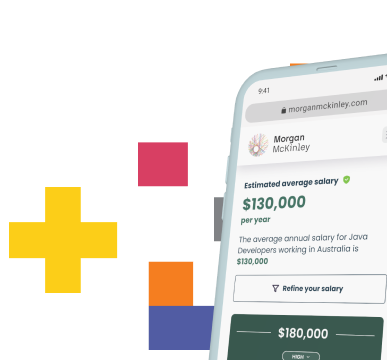Guest Blog: How to Create A Firm Staffing Model That Maximizes Profits & Employee Engagement
Have you ever struggled with the decision to add the next person to your firm? What experience level do you need to support the unique mix of services your firm offers?
Have you ever struggled with the decision to add the next person to your firm? What experience level do you need to support the unique mix of services your firm offers? Having the right number of people at the right levels within your firm produces 2 significant benefits:
- Improved profitability
- Increased employee engagement
A professional service firm providing traditional, routine services makes money from leveraging staff. Leverage is nothing more than paying an employee less than the revenue they produce. If you can maximize your firm leverage in a healthy way you will make more money and have happier employees. Who doesn’t want that?
Let’s take a look at the symptoms of a poor model.
Symptoms of a Poor Staffing Model
- Staff quietly complaining that: The career path looks crowded, or too many senior managers are in their way for advancement, or they are in a rut from doing the same tasks on the same jobs year after year
- Staff retention rates are low
- Senior staff are working below their pay grade because they want to stay busy
- You are concerned your staff isn’t capable of stepping into leadership positions because they lack expertise and leadership qualities
- New business has grinded to a halt because no one has time to prospect
If you have been experiencing any of these symptoms mentioned above, you have a staffing model problem. In fact, the problem might be that you don’t have a model at all! Well you are in luck because I’m going to lay out a basic staffing model that can serve as a guideline for your firm to make key personnel decisions.
Having the right people in the right positions doesn’t happen by accident. It results from having a staffing model that provides guidelines for making hiring, firing and retention decisions. Having the right people in the right positions doesn’t happen by accident. It results from having a staffing model that provides guidelines for making hiring, firing and retention decisions. The model provides some objective data calculated in a consistent way. There is no universal model that works for every firm so your job is to customize it to suit your own needs.
Why This Is Important
We’ve all suffered from the emotional and financial pain of making the wrong staffing decision. In fact, one estimate of the cost of a hiring mistake is 15 times base salary. That is a big mistake! We’ve all suffered from the emotional and financial pain of making the wrong staffing decision. In fact, one estimate of the cost of a hiring mistake is 15 times base salary. That is a big mistake! If you can improve your recruiting and retention efforts by a small percentage, it is reasonable to expect profitability improvements over time.
A typical firm staffing process might look like this:
- Hiring 4-6 new staff every year
- Find replacements for departing employees
- Promote based on tenure and not on always need
The process seems to run itself but lacks a clearly defined strategy based on the type of work and long-term needs of the firm. The result can be a top heavy organization that limits the firm’s ability to attract and retain the best talent. I believe firms can be more strategic about staffing and personnel management. After all, salaries and wages are the highest expense item on your profit and loss statement. Creating a staffing model that is strategic and efficient is definitely worth the effort because it directly contributes to the health and profitability of the firm.
A Seven Step Approach
Using a simple Excel spreadsheet, we can begin to create a base model. I already created one and if you are interested in obtaining a copy of the template just click here. It is helpful to look at the Excel spreadsheet as you read through the 7 steps to get the concepts down.
Here are the 7 Steps:
1. Assess and document the type of client work you do. The work drives the model.
a. If you have a traditional practice consisting of routine type work (audits, reviews & tax preparation) then a traditional leverage model of a low partner to staff ratio works very well as illustrated by the typical pyramid. Large international professional service firms are good examples of traditional leverage models.
b. If you have a specialized practice with complex consulting engagements you will need a top heavy staffing model as indicated by the inverted pyramid. A consulting firm is an example of this model where the number of experienced professionals exceed inexperienced and support staff.
c. The point is the type of work you do drives the overall strategy. The highly specialised consulting practice needs more experienced senior people due to the complexity of the work. A traditional ACA/ACCA/CPA firm needs a larger base of lower paid staff to get the bulk of the work done.
d. Document the type of work your firm performs for your clients and determine if you need a traditional leverage model (the pyramid), a top heavy staff model (the inverted pyramid) or something in between.
2. Segregate your firm hours for a year by engagement type. I will present an example using audit engagement hours.
a. Assurance
i. Audit 40,000 hours
ii. Review
iii. Compilation
b. Tax Compliance
i. Business
ii. Personal
c. Other
3. Develop a staffing model for each engagement type based on the % of time required from each staffing level in order to complete the engagement efficiently.
a. Assurance
i. Audit
1. Partner time 15%
2. Manager time 35%
3. Staff time 50%
4. Apply the model % to the total engagement hours to determine the total partner, manager and staff time
a. Assurance
i. Audit
1. Partner time 15% X 40,000 hours
2. Manager time 35% X 40,000 hours
3. Staff time 50% X 40,000 hours
5. Total all the partner, manager and staff time from each engagement type
6. Divide the total time for each level by the related chargeable hour budget for the level to determine the number of staff needed at each level
7. Compare the need to your current staffing and determine what changes, if any, will be made
What Are The Possible Outcomes?
- Too Heavy
- Too Light
- Just Right
Based on the results, you then develop the tactics necessary to bring your firms staffing mix in line with the model. Remember, this is only a model and the results are only as good as your assumptions so test and re-test your assumptions continuously!
About the Guest Author:

Ken Burke, CPA & Business Coach
Ken spent over 25 years in practice before starting a business coaching and consulting firm. He began his career with E&Y and then became a Partner with a New York regional CPA firm. As a partner, he became interested in best practices for professional services firms and now consults on practice management issues.














